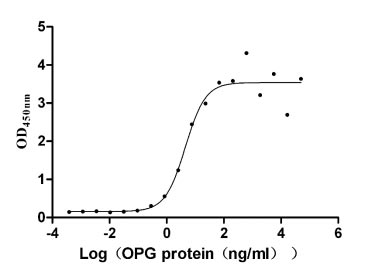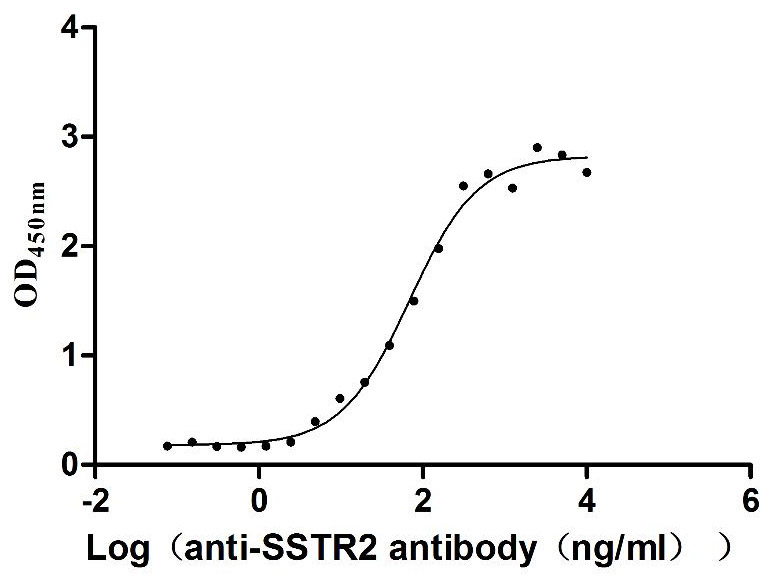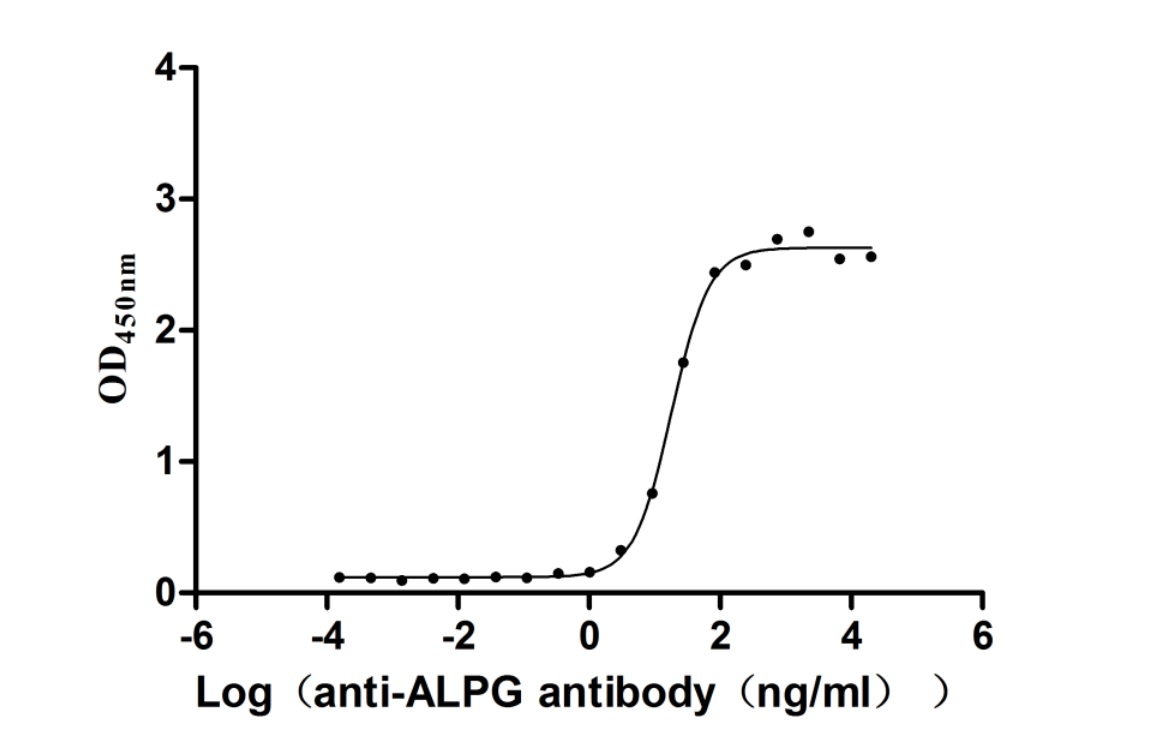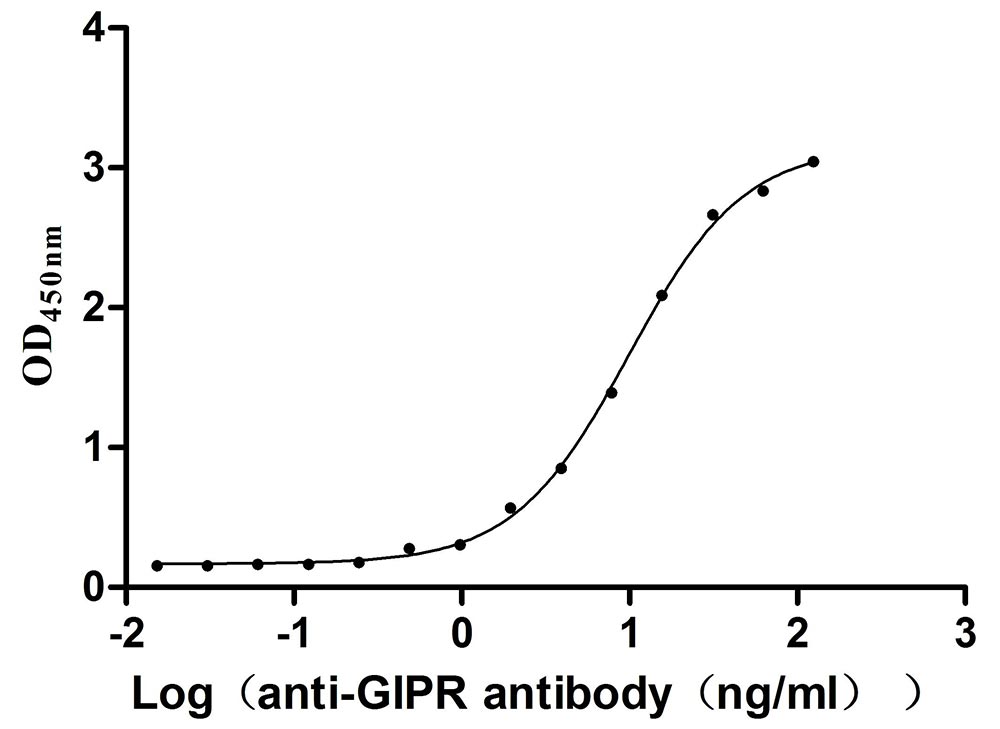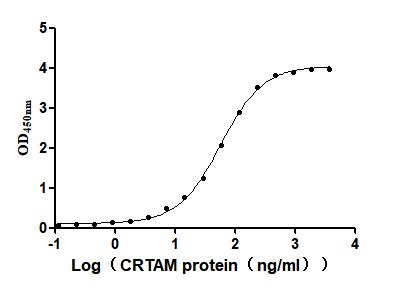Recombinant Murine coronavirus Spike glycoprotein (S), partial
-
中文名稱:Recombinant Murine coronavirus Spike glycoprotein(S) ,partial
-
貨號(hào):CSB-YP318118MJY
-
規(guī)格:
-
來(lái)源:Yeast
-
其他:
-
中文名稱:Recombinant Murine coronavirus Spike glycoprotein(S) ,partial
-
貨號(hào):CSB-EP318118MJY-B
-
規(guī)格:
-
來(lái)源:E.coli
-
共軛:Avi-tag Biotinylated
E. coli biotin ligase (BirA) is highly specific in covalently attaching biotin to the 15 amino acid AviTag peptide. This recombinant protein was biotinylated in vivo by AviTag-BirA technology, which method is BriA catalyzes amide linkage between the biotin and the specific lysine of the AviTag.
-
其他:
-
中文名稱:Recombinant Murine coronavirus Spike glycoprotein(S) ,partial
-
貨號(hào):CSB-BP318118MJY
-
規(guī)格:
-
來(lái)源:Baculovirus
-
其他:
-
中文名稱:Recombinant Murine coronavirus Spike glycoprotein(S) ,partial
-
貨號(hào):CSB-MP318118MJY
-
規(guī)格:
-
來(lái)源:Mammalian cell
-
其他:
產(chǎn)品詳情
-
純度:>85% (SDS-PAGE)
-
基因名:
-
Uniprot No.:
-
別名:S; 3; Spike glycoprotein; S glycoprotein; E2; Peplomer protein) [Cleaved into: Spike protein S1; Spike protein S2; Spike protein S2']
-
種屬:Murine coronavirus (strain A59) (MHV-A59) (Murine hepatitis virus)
-
蛋白長(zhǎng)度:Partial
-
蛋白標(biāo)簽:Tag?type?will?be?determined?during?the?manufacturing?process.
The tag type will be determined during production process. If you have specified tag type, please tell us and we will develop the specified tag preferentially. -
產(chǎn)品提供形式:Lyophilized powder
Note: We will preferentially ship the format that we have in stock, however, if you have any special requirement for the format, please remark your requirement when placing the order, we will prepare according to your demand. -
復(fù)溶:We recommend that this vial be briefly centrifuged prior to opening to bring the contents to the bottom. Please reconstitute protein in deionized sterile water to a concentration of 0.1-1.0 mg/mL.We recommend to add 5-50% of glycerol (final concentration) and aliquot for long-term storage at -20℃/-80℃. Our default final concentration of glycerol is 50%. Customers could use it as reference.
-
儲(chǔ)存條件:Store at -20°C/-80°C upon receipt, aliquoting is necessary for mutiple use. Avoid repeated freeze-thaw cycles.
-
保質(zhì)期:The shelf life is related to many factors, storage state, buffer ingredients, storage temperature and the stability of the protein itself.
Generally, the shelf life of liquid form is 6 months at -20°C/-80°C. The shelf life of lyophilized form is 12 months at -20°C/-80°C. -
貨期:Delivery time may differ from different purchasing way or location, please kindly consult your local distributors for specific delivery time.Note: All of our proteins are default shipped with normal blue ice packs, if you request to ship with dry ice, please communicate with us in advance and extra fees will be charged.
-
注意事項(xiàng):Repeated freezing and thawing is not recommended. Store working aliquots at 4°C for up to one week.
-
Datasheet :Please contact us to get it.
相關(guān)產(chǎn)品
靶點(diǎn)詳情
-
功能:attaches the virion to the cell membrane by interacting with host receptor, initiating the infection. Interacts with murine CEACAM1 to mediate viral entry.; mediates fusion of the virion and cellular membranes by acting as a class I viral fusion protein. Under the current model, the protein has at least three conformational states: pre-fusion native state, pre-hairpin intermediate state, and post-fusion hairpin state. During viral and target cell membrane fusion, the coiled coil regions (heptad repeats) assume a trimer-of-hairpins structure, positioning the fusion peptide in close proximity to the C-terminal region of the ectodomain. The formation of this structure appears to drive apposition and subsequent fusion of viral and target cell membranes.; Acts as a viral fusion peptide which is unmasked following S2 cleavage occurring upon virus endocytosis.
-
基因功能參考文獻(xiàn):
- structure of a mouse coronavirus S trimer ectodomain determined at 4.0 A resolution by single particle cryo-electron microscopy PMID: 26855426
- Authors demonstrate that murine hepatitis virus S proteins are indeed cleaved upon virus endocytosis, and identify a novel processing product S2* with characteristics of a fusion-active subunit. PMID: 24554652
- results indicate an important role for negatively charged endodomain residues in the incorporation of MHV S protein into assembled virions PMID: 23628137
- Biochemical and electron microscopic analyses revealed that virions, while assembled, contained little spike in the envelope, indicating that lack of infectivity during persistence was likely due to deficiency in spike incorporation. PMID: 21035161
- amino acid substitution in the receptor binding domain of the spike glycoprotein demonstrates ability of the virus to evolve to virulent phenotype PMID: 15919915
- observations suggest the amino-terminal region of the S protein, including the receptor-binding domain, & a region in the central part of the S protein containing HR1 & FP communicate & may interact physically in the higher-order structure of the spike PMID: 16956938
- This result suggests that the S2 substitutions exert powerful effects on the fusion trigger that normally passes from S1 to S2. PMID: 18032498
顯示更多
收起更多
-
亞細(xì)胞定位:Virion membrane; Single-pass type I membrane protein. Host endoplasmic reticulum-Golgi intermediate compartment membrane; Single-pass type I membrane protein. Host cell membrane; Single-pass type I membrane protein.
-
蛋白家族:Betacoronaviruses spike protein family
-
數(shù)據(jù)庫(kù)鏈接:
KEGG: vg:1489752
Most popular with customers
-
Recombinant Human Tumor necrosis factor receptor superfamily member 11B (TNFRSF11B) (Active)
Express system: Mammalian cell
Species: Homo sapiens (Human)
-
Recombinant Human Somatostatin receptor type 2 (SSTR2)-VLPs (Active)
Express system: Mammalian cell
Species: Homo sapiens (Human)
-
Recombinant Human Alkaline phosphatase, germ cell type (ALPG) (Active)
Express system: Mammalian cell
Species: Homo sapiens (Human)
-
Recombinant Mouse Gastric inhibitory polypeptide receptor (Gipr), partial (Active)
Express system: Mammalian cell
Species: Mus musculus (Mouse)
-
Recombinant Mouse Cytotoxic and regulatory T-cell molecule (Crtam), partial (Active)
Express system: Mammalian cell
Species: Mus musculus (Mouse)


